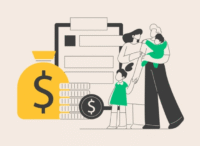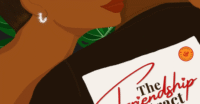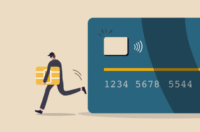- Discover innovative strategies for designing engaging packaging.
- Recognize the significance of sustainability in packaging solutions.
- Learn how to enhance brand recognition through packaging.
Table of Contents
- The Role of Packaging in Business Success
- Designing with Creativity: How to Stand Out
- Sustainable Packaging: Why It Matters
- Color Psychology in Packaging Design
- Typography: The Silent Messenger
- Packaging Materials: Choosing the Right Fit
- Personalization and Consumer Engagement
- The Future of Business Packaging
How a product is packaged in the bustling marketplace can significantly influence consumer decisions. Packaging holds products and acts as an essential point of contact for customers. It communicates brand values, contributes to the unboxing experience, and can act as a silent ambassador for your brand. Effective packaging drives sales and fosters brand loyalty by creating a solid first impression. Cottrell Printing understands the importance of combining practicality with aesthetic appeal to meet evolving consumer expectations and stand out amidst fierce competition.
Table of Contents
Before diving into design strategies, grasping the communicative power of packaging is essential. It provides vital information, safeguards products, and, most importantly, sets your product apart on overcrowded shelves. Businesses must innovate continuously, ensuring their packaging solutions protect the product, reflect the brand’s identity, and engage consumers. This interplay between design and communication is crucial in creating packaging that captivates and sells.
The Role of Packaging in Business Success
Packaging serves not just a functional purpose but also a strategic one. It influences first impressions and can be a deciding factor in a potential purchase, setting quality expectations. Well-designed packaging captures attention, educates consumers, and fosters brand trust. The success metrics of packaging extend beyond the shelf; adequate packaging encourages brand recall and builds consistent consumer relationships. Ultimately, the packaging strategy is as significant as the marketing strategy itself.
Designing with Creativity: How to Stand Out
Creativity in design is the heartbeat of standout packaging. Innovative packaging can differentiate products in an age where consumers are bombarded with choices. Think of unusual shapes or interactive designs that engage and delight. Maintaining a balance between creativity and functionality is essential, ensuring the packaging remains intuitive and practical while capturing the consumer’s imagination. Successful brands invest in creativity to leave a lasting imprint on consumer memory, which aids in building long-term loyalty and advocacy.
Sustainable Packaging: Why It Matters
Sustainability has transcended trend status to become a necessity within the packaging industry. Sustainable packaging, which includes using recyclable materials and reducing waste, mitigates environmental impact and enhances brand reputation. By adopting eco-friendly packaging, brands make a public commitment to sustainability, building trust with consumers who value environmentally responsible practices. This shift towards sustainability is reshaping the industry and reducing carbon footprints on a global scale.
Color Psychology in Packaging Design
Colors are not merely decorative; they evoke emotions and influence perceptions. Understanding color psychology can be pivotal in packaging design as it affects consumer behavior subconsciously. For instance, blue can impart feelings of trust and security, making it a preferred choice for tech and finance brands. Conversely, vibrant colors like red can spur appetite and urgency, making them ideal for the food industry. Selecting the right color palette enhances brand recognition and encourages consumers to connect emotionally with the product.
Typography: The Silent Messenger
Typography is a powerful aspect of packaging that communicates the brand’s message silently yet effectively. The choice of font style, size, and layout contributes to the packaging’s appeal and readability. A well-thought-out typographic design can guide consumers, emphasizing key product benefits and uses while reinforcing brand identity. Typography ensures that customers understand and retain the message, making it an indispensable element of impactful packaging.
Packaging Materials: Choosing the Right Fit
The selection of packaging materials plays a dual role—it affects both the functionality and perception of the product. Different materials have diverse attributes regarding durability, cost, and environmental impact. From the resilience of glass to the versatility of biodegradable plastics, choosing the suitable material can complement the brand’s image and ensure product preservation.
Personalization and Consumer Engagement
With consumers increasingly seeking personalized experiences, brands can leverage customized packaging to boost engagement. Personalized packaging goes beyond aesthetics by creating an intimate and exclusive consumer experience. Tailoring packaging to individual preferences enhances connection and promotes loyalty, as consumers appreciate the effort and consideration brands show. This strategy, grounded in emotional engagement, fosters a sense of belonging and encourages repeat business.
The Future of Business Packaging
The future of packaging is entwined with technological advancements and changing consumer expectations. Emerging trends such as smart packaging and augmented reality transform consumer interactions, providing dynamic ways to engage and educate consumers. By integrating technology, brands can offer real-time information and enhance the overall consumer experience, paving the way for future success.

















Leave a comment